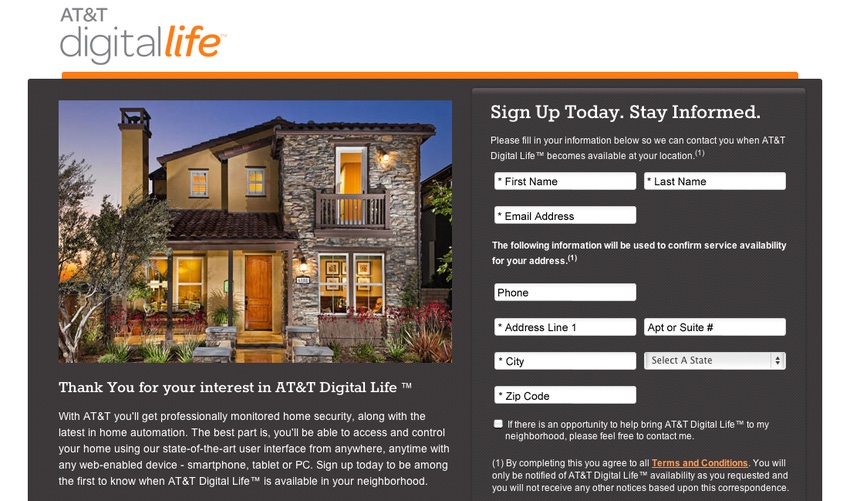US operator AT&T, one of the leading network players in the machine to machine space, has delayed the commercial launch of its planned home security and automation offering in order to scale the launch up, the firm has said.
April 10, 2013

US operator AT&T, one of the leading network players in the machine to machine space, has delayed the commercial launch of its planned home security and automation offering in order to scale the launch up, the firm has said.
Kevin Peterson, senior vice president for the new Digital Life division, told Telecoms.com at MWC2013 that commercial pricing for the connected home solution would be announced and the offering made available to consumers in March this year. The Digital Life page on AT&T’s consumer facing website currently displays a static form asking prospective customers to register for details of future availability.
AT&T told Telecoms.com that demand following trials in two US cities [Atlanta and Dallas] led to an expansion of launch plans. “In response to customer feedback we’re nearly doubling the number of cities where we plan to introduce Digital Life,” the firm said. “As a result, we’re adjusting the launch timing. This allows us to align our marketing and operational plans to accommodate the expanded launch. We will share pricing details when we launch the service this spring.”
In mid-March this year AT&T upped the number of cities it said would be covered at the outset from eight to 15. It has targeted availability in 50 cities by year end.
Digital Life—which will be based around home security and monitoring solutions initially, before expanding into areas like utility management—is an ambitious vertical play from the US telco. In providing an end-to-end security solution, from hardware distribution and retail to installation and after sales support, AT&T aims to “disrupt and remake the security industry,” Peterson said.
While the operator has not revealed the value of its investment in Digital Life, the scope of the project is extensive. The firm acquired and internally developed its own management platform for the security service, has built its own monitoring centres and dedicated support facilities and will source third party providers trained to install domestic equipment. These installers will ensure the devices’ connection to AT&T’s network and leave customers’ homes with the end users fully able to manage their new security solution through AT&T’s bespoke, multiplatform UI, according to Peterson.
Furthermore, while its domestic competitor T-Mobile is moving away from communication device subsidy, AT&T plans to subsidise the cost of the security hardware—connected keyless entry systems, security cameras and sensors—for customers that take its offering. A typical installation could require 30 or 40 devices, Peterson told Telecoms.com.
“We’ll subsidise the upfront cost of the kit and installation in exchange for two-year contracts,” he said. “We’ll be very competitively priced upfront, we’ll give lifetime warranties on the services and equipment and we’ll be very competitive on the monthly fee.”
Subscription security services in the US have a far lower churn rate than telephony, he added. “Industry averages on the security side is [a customer lifecyle of] six to seven years.”
AT&T’s costs will be offset by an international licensing strategy that exploits “owners economics” he added.
About the Author(s)
You May Also Like








.png?width=300&auto=webp&quality=80&disable=upscale)


_1.jpg?width=300&auto=webp&quality=80&disable=upscale)


.png?width=800&auto=webp&quality=80&disable=upscale)